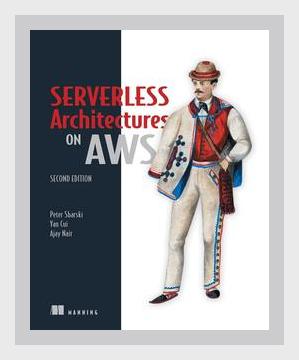Technology and Digital TransformationInternet of Things (IoT)
Introduction
The book “Architecting Cloud-Native Serverless Solutions: Designing, Developing, and Deploying Microservices into AWS Lambda” by Bahaaldine Azarmi focuses on the methodologies and best practices essential for creating efficient cloud-native applications using serverless architectures. Azarmi emphasizes the importance of serverless microservices hosted on AWS Lambda, exploring their benefits, challenges, and implementation strategies. This summary will discuss key points, with actionable steps and relevant examples to bring insights from the book to life.
Core Concepts of Serverless Architecture
Definition and Benefits
Serverless architecture refers to a model where developers write code without managing the underlying infrastructure. AWS Lambda exemplifies this by allowing automatic code execution in response to events. The benefits include scalability, reduced operational complexity, and cost-efficiency.
Action: To start with serverless architecture, developers should focus on modularizing their applications into small, independently deployable services (i.e., microservices).
Example: In a serverless e-commerce application, different microservices can manage user authentication, inventory, payment processing, and notifications separately.
Designing Cloud-Native Microservices
Principles of Microservice Architecture
Microservices architecture involves building applications as loosely coupled services that can be developed, deployed, and scaled independently. Azarmi outlines key principles: independent deployment, domain-driven design, and a decentralized data management approach.
Action: Identify distinct domains within your application that can operate independently. Design microservices to handle each domain, ensuring they communicate through APIs.
Example: An IoT system for smart home devices can have separate microservices handling device registration, control commands, data aggregation, and user notifications.
Developing Serverless Microservices on AWS Lambda
Creating Microservices
AWS Lambda enables developers to run code without provisioning servers. Azarmi details steps to create Lambda functions using AWS Management Console, AWS CLI, or AWS SDKs.
Action: Start by creating a simple Lambda function using the AWS Management Console. Familiarize yourself with the console’s interface and configurations.
Example: A Lambda function can process IoT device data by transforming and storing it in AWS DynamoDB.
Event Sources
AWS Lambda functions can be invoked by various event sources. Azarmi highlights popular sources like Amazon S3, Amazon SNS, Amazon DynamoDB Streams, and API Gateway.
Action: Configure event sources to trigger Lambda functions. Utilize AWS API Gateway to create RESTful APIs that invoke Lambda functions.
Example: When a new object is uploaded to an S3 bucket, it can trigger a Lambda function to process the object’s metadata.
Error Handling and Logging
Robust error handling and logging are critical for maintaining serverless applications. The book recommends structured logging and integrating with AWS CloudWatch for monitoring.
Action: Implement robust logging within your Lambda functions to capture input parameters, process details, and error messages. Use AWS CloudWatch to monitor logs and set up alarms.
Example: If an IoT device sends invalid data, the Lambda function logs the issue and sends an alert via Amazon SNS.
Deploying and Orchestrating Serverless Services
Infrastructure as Code (IaC)
Azarmi advocates for IaC to maintain consistency across environments. He suggests using AWS CloudFormation and AWS SAM (Serverless Application Model) for deployment automation.
Action: Write CloudFormation templates to define your infrastructure, and use AWS SAM to simplify serverless application deployment.
Example: Deploying an IoT data processing stack with Lambda functions, DynamoDB tables, and S3 buckets using a single CloudFormation template.
CI/CD Pipelines
Continuous Integration and Continuous Deployment (CI/CD) are pivotal for modern software delivery. The book describes setting up pipelines with AWS CodePipeline, CodeBuild, and CodeDeploy.
Action: Create an automated CI/CD pipeline that builds, tests, and deploys serverless applications using AWS services.
Example: A pipeline that automatically deploys updated Lambda functions to production upon successful unit tests and integration tests.
Best Practices and Advanced Topics
Security
Security is paramount in serverless applications. Azarmi discusses best practices, including the principle of least privilege, encryption, and secure coding.
Action: Implement IAM roles with minimal permissions required for Lambda functions. Encrypt sensitive data at rest and in transit.
Example: A Lambda function performing payment processing should have IAM roles that only allow access to necessary AWS resources and encrypt payment data stored in DynamoDB.
Performance Optimization
Optimizing performance involves fine-tuning both the code and AWS configuration. Azarmi suggests monitoring function execution time and memory usage via CloudWatch.
Action: Regularly analyze Lambda execution metrics and adjust memory allocation to balance performance and cost.
Example: Reduce memory allocation for a Lambda function that processes lightweight tasks to lower costs without affecting performance.
Observability and Monitoring
Effective monitoring encompasses distributed tracing, logging, and metrics collection. The author highlights using AWS X-Ray for tracing and CloudWatch for comprehensive monitoring.
Action: Integrate AWS X-Ray with your Lambda functions to trace requests and identify bottlenecks.
Example: Using X-Ray to diagnose latency issues in a microservice handling IoT telemetry data.
Scaling and Availability
Serverless architectures inherently provide auto-scaling features. However, Azarmi recommends stress testing and understanding AWS Lambda’s concurrency limits.
Action: Conduct load testing to determine peak capacity and set up reserved concurrency to control throttling.
Example: A Lambda function handling IoT notifications requires setting a reserved concurrency limit to ensure it can process high volumes during peak hours.
Case Studies and Examples
The book includes practical case studies to illustrate concepts. A notable example is an IoT application for a smart agriculture system that leverages Lambda, DynamoDB, and API Gateway.
Smart Agriculture IoT Application
- Architecture Design: The application comprises microservices for data ingestion, processing, and sensor management.
- Implementation: Lambda functions are used to process sensor data, DynamoDB stores the data, and API Gateway enables farmer interactions with the system.
- Action: Design and deploy similar IoT solutions using Lambda, ensuring each microservice addresses a specific domain (e.g., soil moisture monitoring).
Conclusion
“Architecting Cloud-Native Serverless Solutions” by Bahaaldine Azarmi is an essential guide for developers and architects aiming to build scalable, efficient, and cost-effective applications on AWS Lambda. By understanding the principles, development practices, deployment strategies, and best practices outlined in this book, professionals can successfully implement serverless architectures. The actionable steps and concrete examples provided ensure practical application of the concepts, facilitating the transition to a cloud-native, serverless paradigm.
Technology and Digital TransformationInternet of Things (IoT)
